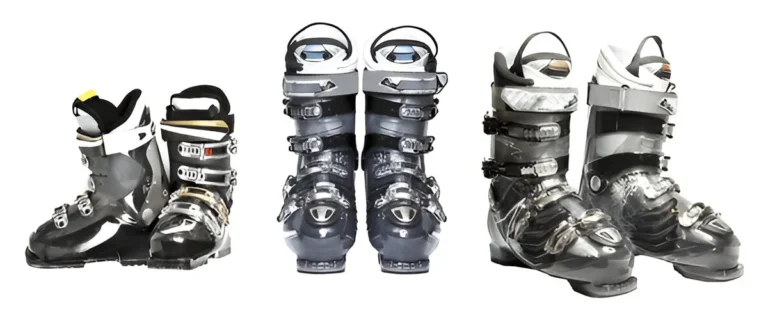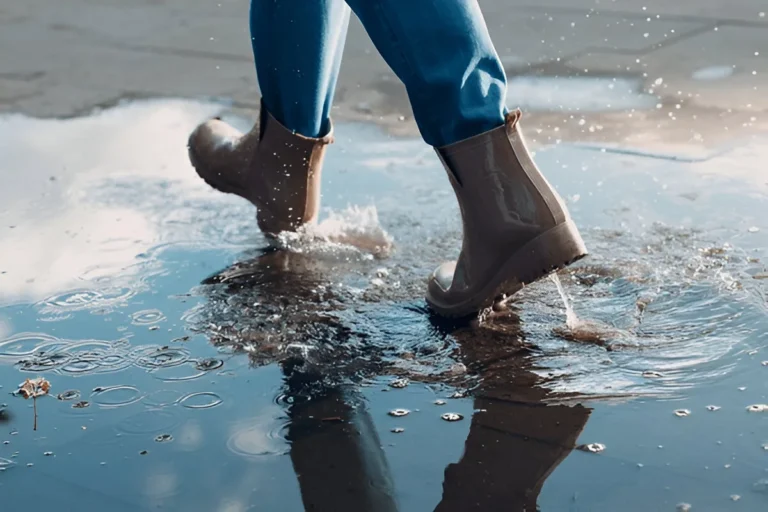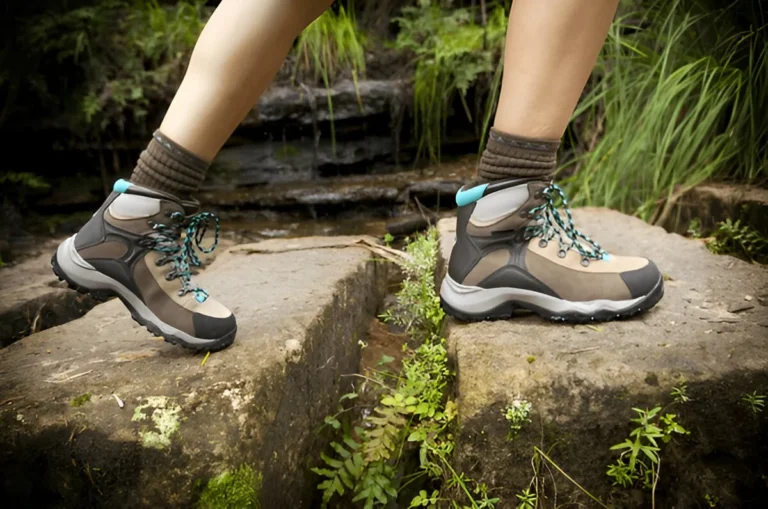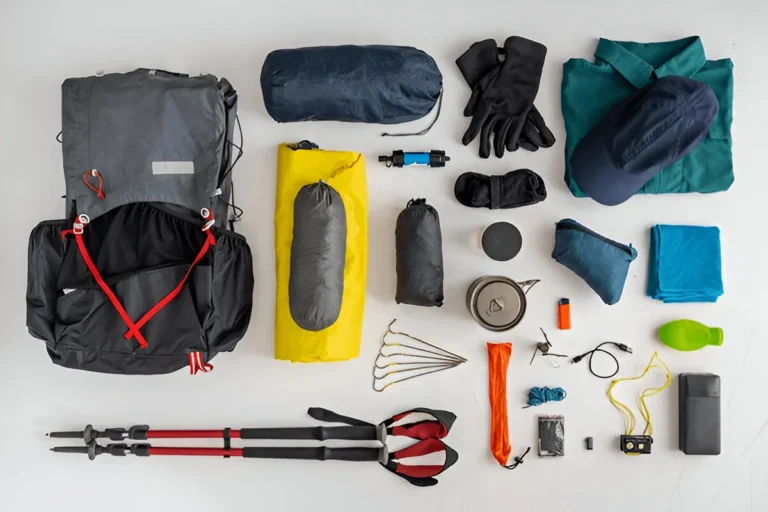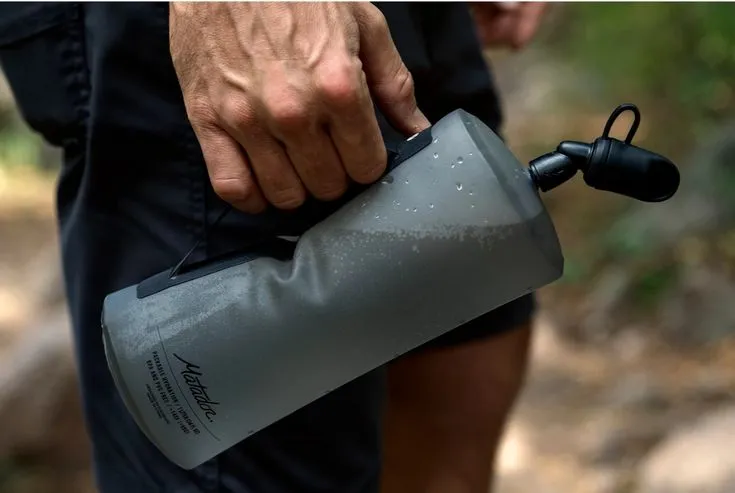If you want to know how to stay warm in a tent, you have landed at the right place because we have a group of outdoor hikers and experts who have camped for years, even in very cold weather. Whether you are camping for the first time or have already spent a chilly night outdoors. We understand how uncomfortable it feels to shiver in your sleeping bag and wish you were back home. From our experience, research, and tested methods, we have made a list of 20 Simple tips to help you stay warm in a tent.
If you are preparing for your next outdoor trip I recommend you to make sure to also check out our guide on the Best Hiking Gear, where our team of experts covers all important items that can greatly improve your comfort and warmth. You do not need heavy heaters or electricity because we believe that smart planning using the right gear and learning some helpful tricks will turn your cold camping trip into an enjoyable memory.
20 Tips for staying warm in a tent
1. Choose the Right Tent
Not every tent is made for the winter. A four-season tent is specially built with stronger materials, fewer mesh parts, and stronger poles to handle snow and strong winds. If you are using a summer tent in cold weather, staying warm will be very hard because summer tents let in too much air and don’t hold heat well. You can remember one thing: your tent is your first and most important shield against cold, wind, and snow.
Main Points
- Use a four-season tent for snow and winter winds.
- Check for strong poles and ripstop fabric.
- Avoid mesh-heavy summer tents in cold weather.
2. Select a Sheltered Campsite
Where you set up your tent matters a lot. Even the best can stop the wind if you pick a bad spot. If you are trying to find natural wind blockers like trees, big rocks, or hillsides to help block the cold wind. Choosing the right place to camp can help keep you much warmer without needing any extra gear.
Main Points
- The pitch behind trees, boulders, or ridges.
- Avoid wide open or exposed areas.
3. Use a High R-Value Sleeping Pad
When you are sleeping in the tent, most of your body heat escapes through the ground, not the air. That is why you need a sleeping pad with a high R-value to protect you from the cold ground. If you don’t have a pad with a high rating, you can stack two pads to get more warmth. Overall, your sleeping pad is the important as your sleeping bag when it comes to staying warm.
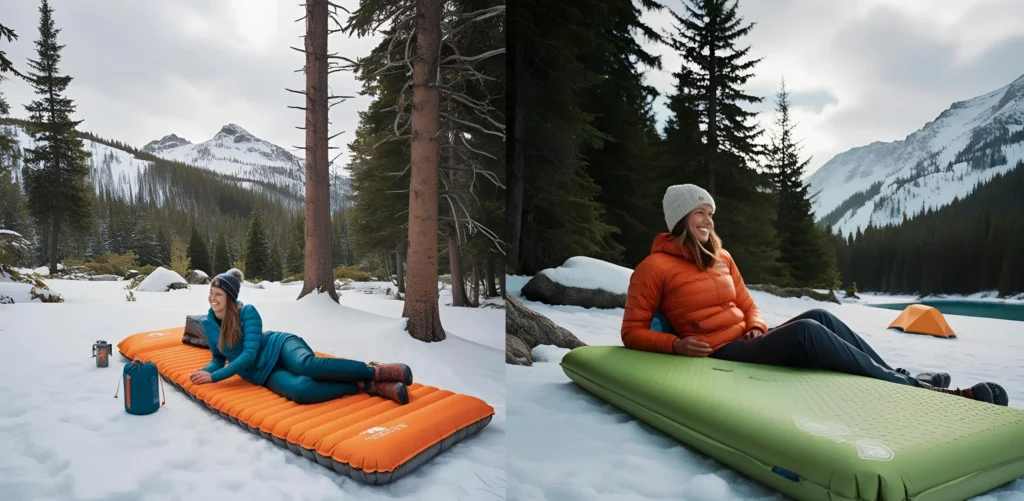
Main Points
- Choose R-value 4+ for cold-weather trips.
- Stack foam and inflatable pads if needed.
- Focus on ground insulation, not just the bag.
4. Invest in a Cold-Rated Sleeping Bag
Your sleeping bag keeps your head inside. But only if it is made for the cold temperatures, if you are facing down, sleeping bags are warmer and lighter. But they don’t work well if it is wet. Our experts notice that you can make sure that you pick a bag with a comfort rating lower than the coldest temperature you expect on your trip.
Main Points
- Use down bags for dry cold, and synthetic for damp.
- Select bags rated at least 10°F below conditions.
5. Layer Your Sleeping System
Layering inside your sleeping setup works the same way as layering clothes. You can add a liner, quilt, or extra blanket that helps to trap more heat and block out cold air. This is very helpful if your sleeping bag alone keeps you warm enough. Overall, each added layer gives you more insulation and helps to reduce the heat loss while you are sleeping.
Main Points
- Use sleeping bag liners for added insulation.
- Add an extra blanket or top quilt
6. Use a Hot Water Bottle
The main thing to keep warm in your tent is putting a hot water bottle inside your sleeping bag, which helps you to get hours of cozy heat, especially if you place it near your feet or your body core. Make sure that you can use a leakproof and non-insulated bottle like Nalgene, and fill it with hot water.
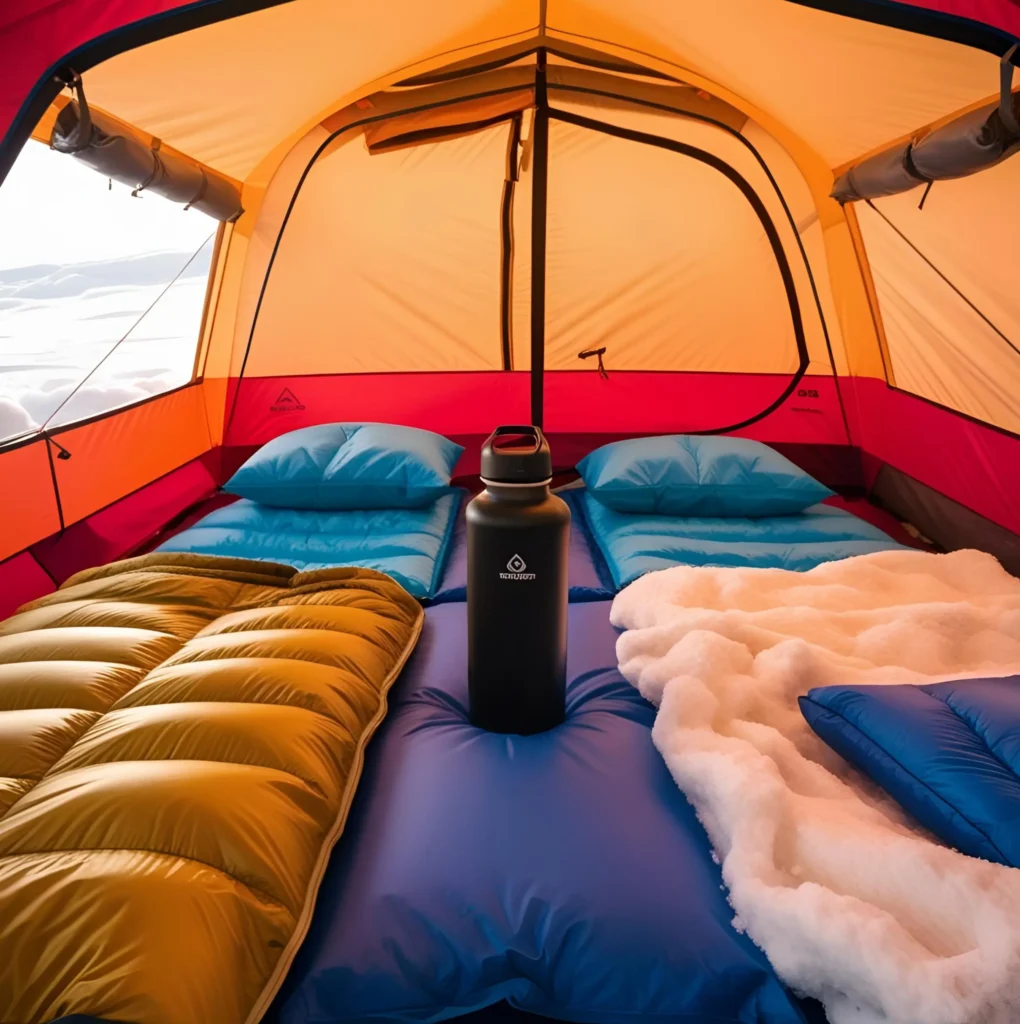
Main Points
- Fill the bottle with hot water.
- Place near your feet or core in the bag.
7. Wear Dry Layers
You can never sleep in the clothes you wear while hiking or sweating. The moisture will make you cold very quickly. Our expert team says that before going to bed, you can change into dry base layers, and if possible, you can use merino wool. Overall, Fresh and dry clothes help you to trap your body heat and keep you warm all night long.
Main Points
- Switch to dry base layers before bed.
- Use thick wool for warmth
8. Keep Your Head and Feet Covered
If your body loses a lot of heat through your head and feet. Then wearing a warm hat, thick socks, or even a face-covering mask can make a big difference in keeping you warm inside the tent. Overall, if you have a good sleeping bag, then leaving your head or feet uncovered can still make you feel cold.
Main Points
- Wear a wool hat or a Face Mask at night.
- Use thick wool socks or booties.
9. Block Tent Drafts
Even a small draft can steal warmth from inside your tent. You can block these cold gaps. Especially near the floor or zippers.By placing the backpacks, jackets, or extra gear over them. This helps to keep the inside of the tent warmer and makes your sleeping setup work much better.
Main Points
- Seal gaps near tent edges with gear.
- Block low vents if cold winds blow through.
10. Eat a High-Calorie Meal Before Bed
Your body needs energy to make heat, so it is good to eat before going to bed. This keeps you warm. A snack or meal with plenty of fat and protein helps to keep your body warm for longer. If you are going to sleep hungry.
Main Points
- Eat a fatty-rich meal before going to sleep.
- Avoid going to bed with an empty stomach.
11. Use Hand and Foot Warmers
The chemical hand and foot warmer gives you extra heat to the coldest parts of your body. You can put them inside your gloves, boots, and sleeping bag to stay warm. Just remember to follow the safety instructions so you don’t get burned or overheated.
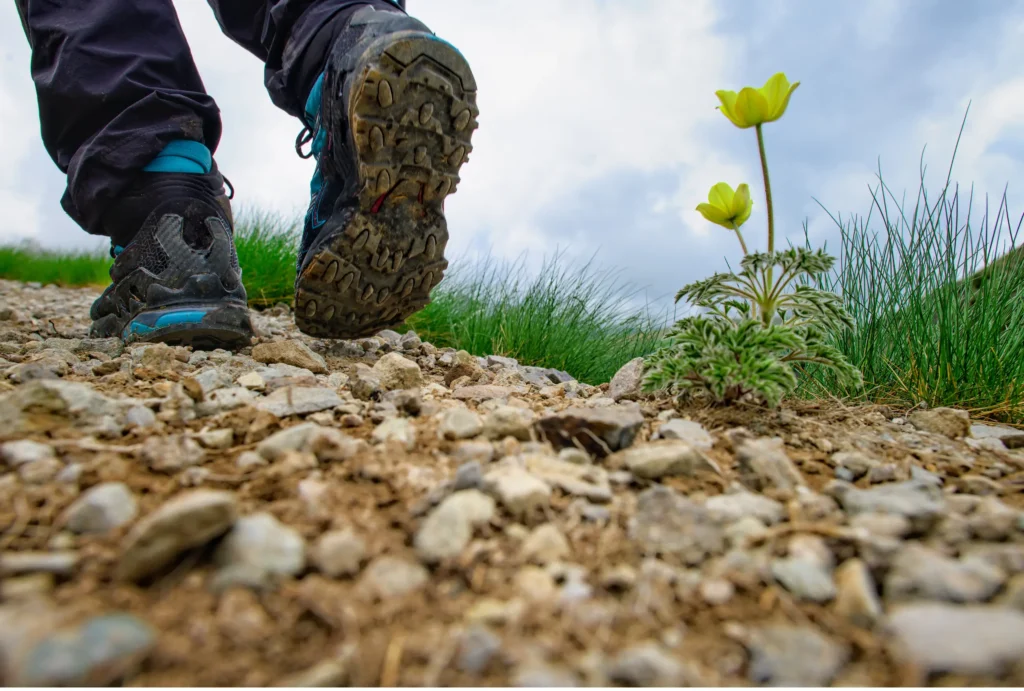
Main Points
- Place hand warmers in gloves or pockets.
- Use toe warmers or foot warmers in boots or socks.
12. Ventilate Your Tent
You might sound strange, but keeping a small part of the tent door slightly open helps to reduce the condensation inside. If too much moisture builds up, it can make your sleeping bag and clothes damp, and damp gear does not keep you warm.
Main Points
- Crack open a small vent or zipper.
- Avoid sealing the tent completely shut.
13. Double Up on Sleeping Pads
If you are using two sleeping pads, like putting a foam pad under an inflatable one. It gives you extra insulation from the cold ground. This is useful if you only have pads with a low warmth rating or if you are camping in very cold weather. More layers under you mean less heat escaping from your body.
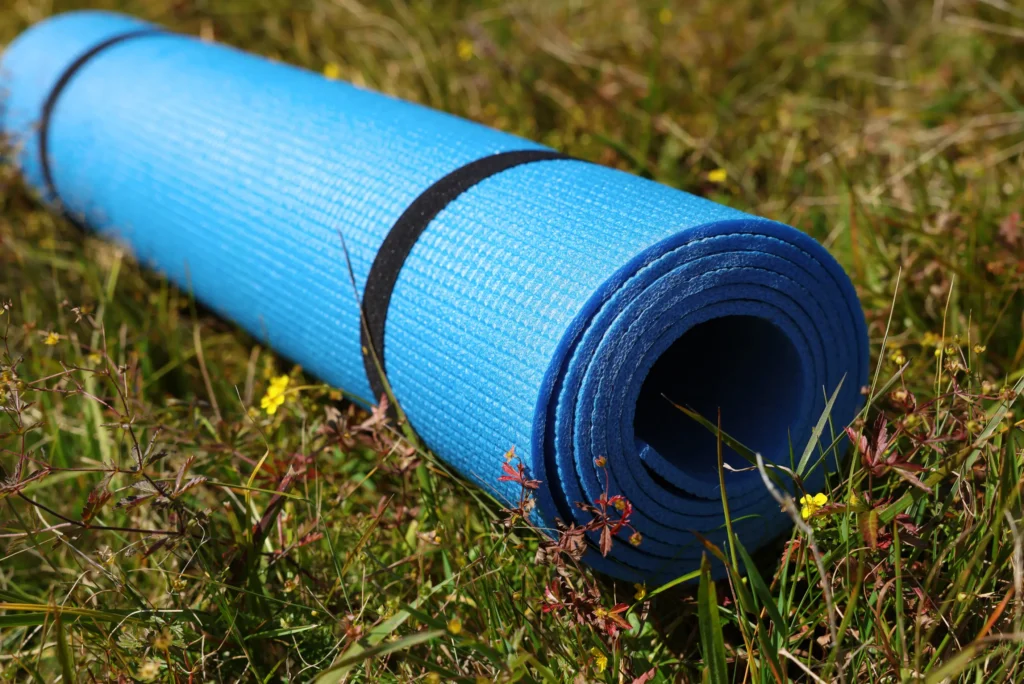
Main Points
- Combine a foam pad + inflatable pad.
- Boost total R-value for extreme cold.
14. Store Clothes in Your Sleeping Bag
If you are putting the clothes you plan to wear the next day inside your sleeping bag keeps them from freezing overnight and helps to fill empty spaces for extra warmth. This means that you have warm clothes to put on in the morning and make your day start more comfortably. It helps your sleeping bags stay warmer overall.
Main Points
- Pack tomorrow’s clothes inside your bag.
- Keep items warm and ready for the morning.
15. Keep Electronics and Water Inside
Cold Weather makes batteries die faster and can freeze your water bottles solid. To stop this, keep your electronics and water inside the tent or even inside your sleeping bag at night. This keeps your gear safe and makes sure you have working devices and drinkable water when you wake up.
Main Points
- Store electronics in your sleeping bag or near your body.
- Keep water bottles inside the tent.
16. Do Light Exercise Before Bed
Doing a few jumping jacks or walking quickly helps to warm up your body just before you get into your sleeping bag. This gives your sleeping system more heat to hold onto, and our team of experts says that be careful not to do too much and start sweating.
Main Points
- Do 1–2 minutes of light cardio before bed.
- Avoid sweating
17. Use a Tent Carpet or Extra Blanket
Placing a carpet or extra blanket on the tent floor protects you from the cold ground. This is especially helpful if your tent floor is thin or you are camping on snow or ice. Every Extra Layer will help you hold in more heat and keep you warmer.
Main Points
- Lay a blanket or foam layer under your pad.
- Use a dedicated tent carpet if available.
18. Cuddle Up
If you are camping with a partner or a dog, then you can share body heat by sleeping close together or using a double sleeping bag. The sharing of warmth can help in very cold conditions. Just make sure to stay dry and manage any moisture.
Main Points
- Use double sleeping bags or zip bags together.
- Share the warmth with a partner or pet.
19. Avoid Overdressing
If you are wearing too many layers inside your sleeping bag can press down on the insulation and make it less able to keep you warm. It is smarter to wear just good base layers and let the sleeping bag do its job.
Main Points
- Avoid piling on too many layers.
- Let the sleeping bag’s insulation work.
20. Maintain a Positive Mindset
If you are staying calm, Confident, and Mentally Prepared can help you handle the cold better. If you are feeling anxious or stressed, you notice the cold more. While a positive mindset helps you focus on smart solutions, trust in your planning, and gear up.
Main Points
- Stay calm and focused.
- Trust your gear and preparation.
Conclusion
Here we have a team of experts who want to learn you how to stay warm in a tent. This is key to having a fun and comfortable winter camping trip. By picking the right gear, planning, and using these helpful tips, you can enjoy your camping adventure and stay cozy even when it’s cold outside. With the right attitude and smart choices, winter camping can become a fun or special experience. The cold weather does not stop us from enjoying nature. Stay Ready and believe in yourself, and remember that every letter and every small tip helps to make your cold nights.

